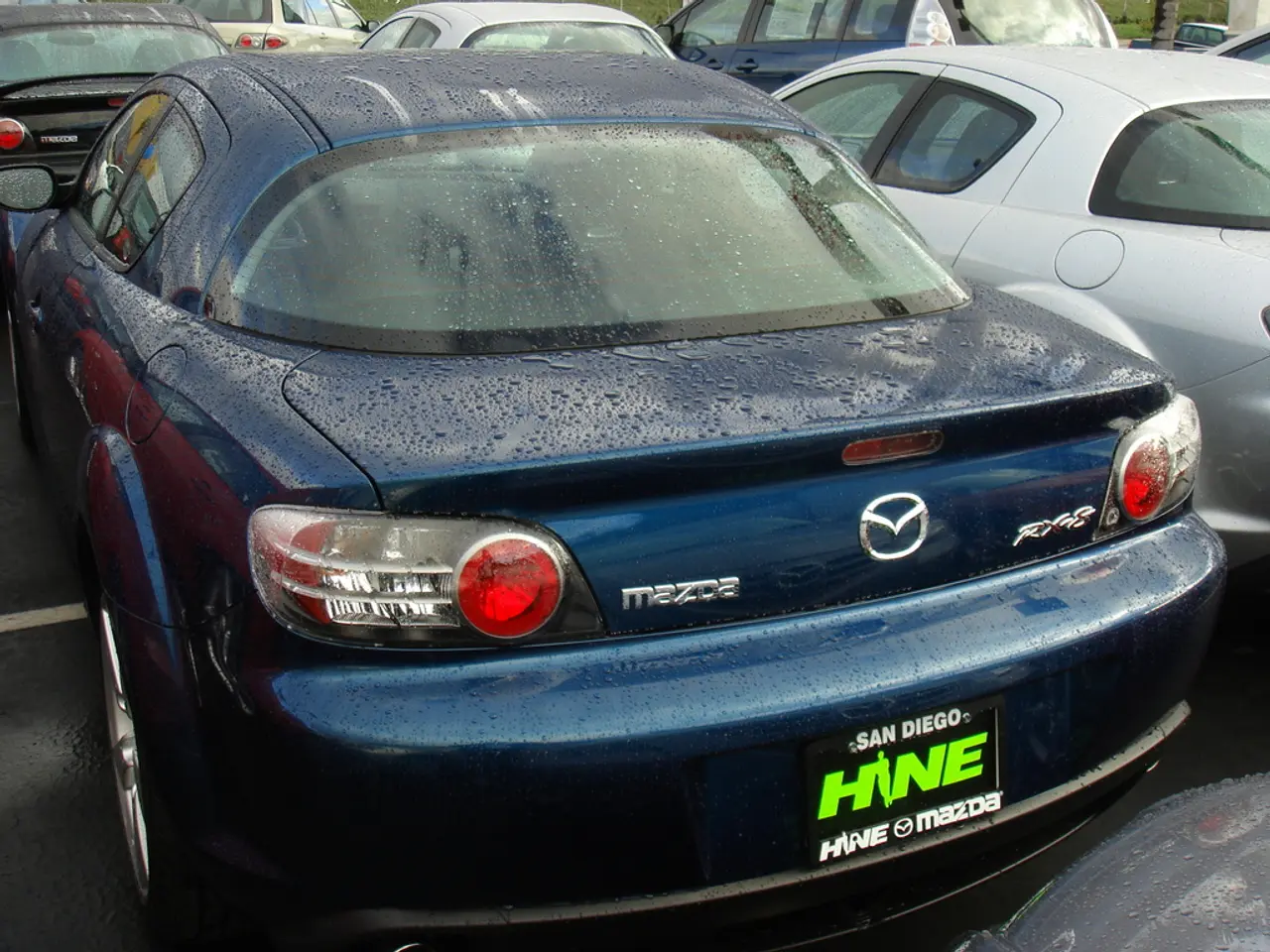Insurance claims by GAP significantly increased by a factor of three over a span of three years.
In the rapidly evolving world of automotive sales, a significant shift has been observed in the realm of Guaranteed Asset Protection (GAP) insurance payouts for electric vehicles (EVs). Over the past few years, these payouts have nearly tripled, according to recent data. This surge can be attributed to a combination of factors that have created a 'perfect storm' in the car market.
One of the primary reasons for this trend is the rapid depreciation of electric vehicles. Unlike traditional vehicles, EVs tend to lose a significant portion of their value in just two years, with some models depreciating by as much as 50-60 percent. This rapid depreciation creates a growing gap between the car's market value (which insurers use to calculate payouts if the car is written off) and the amount the owner still owes or originally paid. As a result, GAP insurance claims have to cover a larger shortfall.
Another factor contributing to the increase in GAP payouts is the surge in vehicle thefts, particularly of high-value EVs. More than four in 10 of MotorEasy's GAP claims over £15,000 were for stolen Range Rovers, and GAP payouts for high-spec electric vehicles have exceeded £20,000, according to the company's data.
Additionally, insurance companies have been slow to adjust valuations fully in line with updated Financial Conduct Authority (FCA) warnings, resulting in continued undervaluation on normal insurance payouts and therefore higher reliance on GAP cover to compensate owners.
The escalating financial risks associated with car ownership are not limited to the increase in GAP insurance payouts. The combination of factors has also led to car insurers writing off vehicles more readily due to the complexity of modern cars and the high cost of replacement parts.
The CEO of MotorEasy parent company Intelligent Motoring reiterated that the financial risks associated with car ownership are escalating, emphasising the need for GAP insurance as an increasingly vital financial safeguard. The average GAP payout for car insurance was £1,587 in 2021, but by 2024, this had increased to £5,558.
In conclusion, the significant increase in GAP insurance payouts for electric cars can be attributed to the combination of rapid EV depreciation, more frequent and costly write-offs due to thefts, and undervaluation issues by insurers. These factors highlight the importance of GAP insurance as a crucial financial safety net in the current car market.
- The depreciation of used electric cars is rapid, with some models losing up to 60% of their value within just two years, making GAP insurance claims more prevalent due to the larger shortfall between the car's market value and the amount owed by the owner.
- MotorEasy's data shows an increase in GAP payouts for high-value electric sports cars, with high-spec electric vehicles having GAP payouts exceeding £20,000 and more than four in ten of its claims over £15,000 being for stolen Range Rovers.
- Insurance companies have been slow to adjust valuations in line with FCA warnings, resulting in continued undervaluation on normal insurance payouts and, consequently, a higher reliance on GAP cover to compensate owners.
- The complexities of modern cars and the high cost of replacement parts have led car insurers to write off vehicles more frequently, adding to the escalating financial risks associated with car ownership.
- As the average GAP payout for car insurance grew from £1,587 in 2021 to £5,558 by 2024, the CEO of MotorEasy's parent company, Intelligent Motoring, reinforced the importance of GAP insurance as a crucial financial safety net in the current car market.








